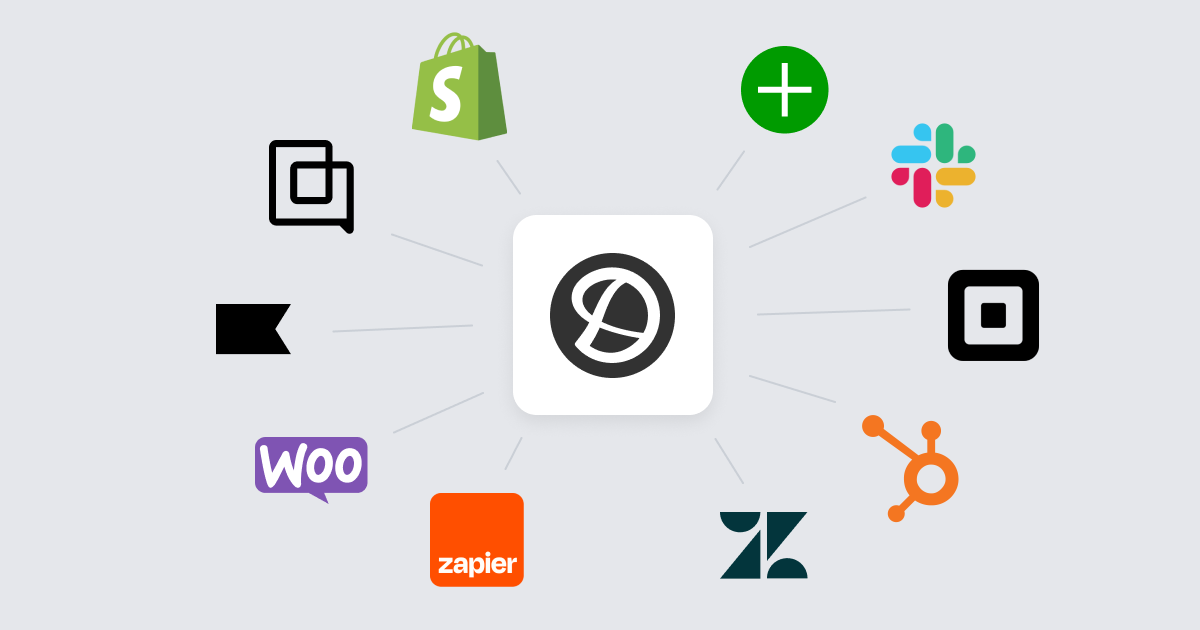Often used as a barometer for brand health, Net Promoter Score surveys measure customer loyalty by identifying customers as promoters, passives, and detractors by asking:
“How likely are you to recommend ABC Company?”
Answers are then given on a scale of 0-10, with 10 being the “very likely” to recommend. Those who answer 9 or 10 are called “promoters,” and they are your brand’s biggest fans. Passives are customers who answer 7 or 8. Passive customers are not likely to hinder your business with negative word-of-mouth, nor are they likely to recommend your business.
And then there are detractors.
What is a detractor?
Detractors are customers who rate your brand between 0-6 as they are not satisfied with your company or the services provided, unlikely to make a repeat purchase, and more likely to share their negative experiences.
While the idea of someone being a detractor to your brand is concerning, we’re here to tell you that it’s really not the end of the world: it’s an opportunity for growth.
Running NPS software successfully is more than simply asking your customers for feedback. It’s about using that feedback to fundamentally improve your product or service. But an often undervalued aspect of doing NPS well is rigorously following up, also known as closing the loop, with detractors.
Following up with detractors and understanding the reasons behind their sentiment can lead to impactful product or service changes, and even guide the direction of your brand. While personally reaching out to each of your detractors is time-consuming, the benefits outweigh the costs.
We’ve worked with thousands of companies who have seen the power of closing the loop on detractor feedback, and have compiled the top 12 reasons you should follow up with your detractors to improve the health of your business.
1. Convert detractors into promoters
The goal of any customer-focused company is to deliver a perfect experience to every customer, every time. Knowing that you’re almost guaranteed to miss the mark sometimes, you should view detractors as a gift not to be squandered.
When a customer self-identifies as a detractor, it means you’ve successfully unearthed a tangible opportunity to right a wrong (or series of wrongs). It may seem counterintuitive, but you’ll likely find that some of your most loyal customers are former detractors. A detractor’s expectations are already low, which means they have high upside.
Simply showing them that you care by following up on their survey feedback is often enough to turn them around. So reach out, acknowledge their experience, do your best to do right by them, and turn them into promoters. You’ll be able to report to your internal stakeholders that you’ve been able to improve your NPS, and have also gained more customers who are willing to promote your business.
2. Create a customer-centric culture where everyone is accountable for each detractor’s experience
As your company and customer base grows, it’s all too easy to drift into thinking about the customer experience in numerical terms, instead of real human experiences. You begin to say things like: “1% of customers experienced a late shipment,” or “3% of customers were affected by this bug.”
This sort of thinking leads to a disconnect between what you deliver and what your customers actually experience. It’s the exact opposite of the culture you want to create: 84% of customers say being treated like a person, not a number, is very important to winning their business.
When you follow up with folks who didn’t have a great experience, it’s impossible to escape the fact that you let a real person down.
Having a one-on-one conversation with a customer forces you to own the decisions your organization has made. You can either stand behind them, and risk losing the customer, or you can fix them.
Whatever you choose, these one-on-one conversations help you understand exactly what type of experience your company delivers.
In a recent blog, we cited the importance of measuring the experience provided by employees when a customer visits a store or interacts with a sales/support rep.
Collecting this feedback reveals gaps between what customers expect versus what your business provides. When your team personally follows up, it humanizes the customer and holds everyone accountable for what’s not working.
With everyone owning the consequences of a customer interaction, you can minimize the number of future detractors — even churn — by making the necessary adjustments to employee training, processes, systems, and services from the insights detractor feedback provides.
3. Train your team not to dread negative feedback, but be proactive about detractor issues
Getting a piece of negative feedback is always jarring. The instinct may be to pass blame to another department, dismiss the feedback as customer error, or maybe even just ignore it altogether. All in all, it’s not uncommon for the feeling around negative feedback to be one of dread.
However, digging in by following up often reveals that detractors are upset about things that can be solved relatively quickly by your support team. Maybe they can’t find their tracking number, or they want to return something but missed the window by a day. Maybe they’re requesting a product feature that you happen to have in private beta.
Many of these acute issues can be resolved by your support team instantly. They can respond with the customer’s tracking number and info about when it will arrive. They can grant an extension on the return policy and include a free return shipping label. They can invite the customer into a preview of a feature that has yet to be launched. There’s nothing more rewarding than realizing that you already have a solution for a customer.
But, you may not know that the issue they have is solvable until you follow up. Once you do, you’ll find these customers are often the easiest to convert to promoters. And once you’ve trained your team to follow up, you’ll be rewarded with a culture that doesn’t dread feedback, but instead works together to provide an improved experience for customers.
4. Open a line of communication for any future issues
Once you’ve turned a detractor around, they will remember that positive experience. If they encounter any new issues, they’ll feel comfortable knowing they can reach out to a real person on your team who cares.
This is incredibly valuable. It gives you the opportunity to head off any future problems before they have a chance to sour the relationship, essentially giving your company a second chance after their needs weren’t met.
5. Fill in the blanks when a detractor does not leave a comment
Detractors may not always answer the second part of the NPS survey: the open-ended question that asks why they rated you poorly. Even if they do leave a comment, they may not share the whole story.
When you follow up, you have the chance to learn more about their entire experience. What caused the issue? What were they expecting? Were they told something that wasn’t true? This is invaluable for both helping the customer in the moment, as well as providing your team with a complete picture of where you can improve.
Our biggest piece of advice: don’t hesitate to get personal in order to get the information you need to improve that customer’s experience so you can improve your business.
Ask if they can provide more information as to why they’re likely not to recommend your brand. Take their feedback in stride, respond positively and, most importantly, thank them for any additional information they provide.
6. Increase the chance of retention by sharing upcoming improvements with detractors
Detractor feedback can illuminate “soft” areas of your product or service for which there is no quick fix. While you may not be able to fix these issues immediately, it’s still good practice to acknowledge the pain the customer is feeling, and share any upcoming improvements on the product roadmap that could address their concerns.
In the eyes of the customer, doing this shows that your company is taking the necessary actions to continually improve their experiences. The key here is to open a channel of communication that you can use to inform them of any new developments, and give yourself more chances to retain them.
7. Minimize detractor fall out
88% of consumers who rate a company’s CX as “very good” are likely to recommend the company, compared with only 15% of those who rate a company’s CX as “very poor.” Not only are your detractors less likely to refer your business to others, but they are also more likely to speak negatively about your brand with friends, family, and online review sites.
While following up with your detractors by acknowledging their concerns, showing empathy, and offering solutions may not be enough to avoid a negative Yelp review every time, it has been shown to help diffuse and lower the likelihood that a detractor will do so.
So, let your detractors vent to you before they vent to anyone else. Responding to detractors in a timely fashion can disarm them, and pave the way for a much more constructive conversation.
8. Help you identify who your silent detractors may be
Many issues, like a slightly late package, or a couple small bugs in a piece of software, don’t usually warrant an email to customer support. But these experiences add up! And they will slowly turn people into detractors.
Only a small percentage of your total customer base will ever contact customer support and let you know they’re unhappy. But chances are, many more of your customers are experiencing the same issue, and feel the same way.
Once you’ve been able to identify a pattern among your detractors, you’ll be able to proactively reach out to any other customers who haven’t logged a complaint yet, leading to a healthier customer base.
9. Stop internal issues before they become unsolvable
When evaluating NPS scores and following up with your detractors, pay close attention to any patterns with the feedback being provided, and evaluate if the reasons for their low scores are inconsistent or so common that they could possibly be endemic to your business.
If your analysis reveals the latter, then we recommend getting to the origin of the issue by conducting a root cause analysis. Essentially, a root cause analysis is a problem-solving method that helps you treat the fundamental issue leading to complaints — not just the symptoms.
Quickly identifying these hidden causes can help your business address them before they become unsolvable.
10. Stay ahead of churn
According to Qualtrics, developing a predictive churn model consists of two phases: building and refining your data set and model; and testing and learning your response program. While each business incorporates many pieces of data into their predictive models, Qualtrics stresses that customer experience data (NPS, CSAT, CES) should be included in any retention-related modeling.
Following up with your detractors to uncover more insight arms your team with proactive contextual data which eventually can be correlated to the binary data point of “customer did/did not churn.”
For example, your team notices that three customers have churned this quarter. You also notice that they recently gave your business a low NPS score and your follow up efforts revealed that they were unhappy with a new service.
By identifying this correlation, the customer success team can now look at other customers (who have yet to churn) citing the same reasons for dissatisfaction and conduct the necessary activities to keep them engaged with your brand.
11. Gain the most valuable customer testimonial there is: a detractor turned promoter
There’s no story more compelling than one of redemption. A customer writes a review, starting out about how they were unsatisfied, but then details out all the changes and improvements a company made to turn their experience around.
This type of social proof acknowledges that businesses aren’t infallible, and shows customers that if they are patient and give your business a second chance, you’ll prioritize their needs every time.
Testimonial software that’s built into your feedback platform makes gathering and publishing these types of reviews a cinch, so keep that in mind when choosing an NPS tool.
12. Follow up with detractors to show that your brand prioritizes customers
By 2020’s end, it is expected that customer experience will overtake price and product as the key brand differentiator. Moreover, 86% of customers are willing to pay more for a great customer experience when interacting with a brand — highlighting the mutually beneficial relationship between pleasing customers and running a top-notch CX program.
Following up with your detractors is a small thing to show that your business cares about their voice and that their satisfaction and experiences are your team’s top priority, keeping your business on par (or even giving your company a leg up) on the competition.
Detractors are unavoidable. It’s what you do next that counts.
Having an NPS program is one of many ways to measure, evaluate, and mend the health of your brand, products, or services. Detractors are unavoidable, however, following up with them to uncover the reasons for their sentiment is a proactive way to help your brand provide better customer experiences.
Following up with detractors is essential for positioning your business as customer-centric. Personal responses, acknowledgment of concern, and taking action makes customers feel valued, all of which can be done through our experience management software.
Looking to do more than measure NPS? Start listening to your customers wherever, whenever, with Delighted’s proven survey methods.







